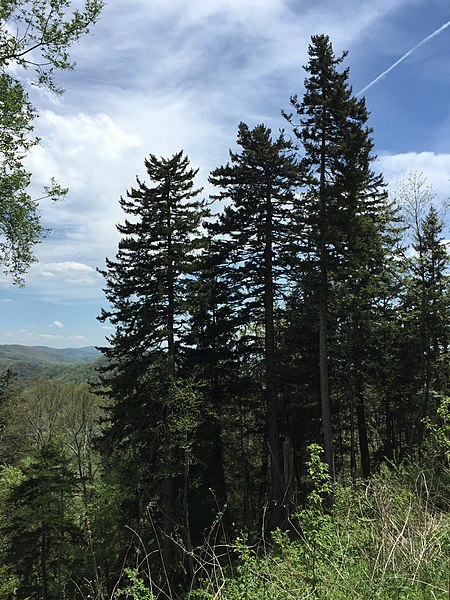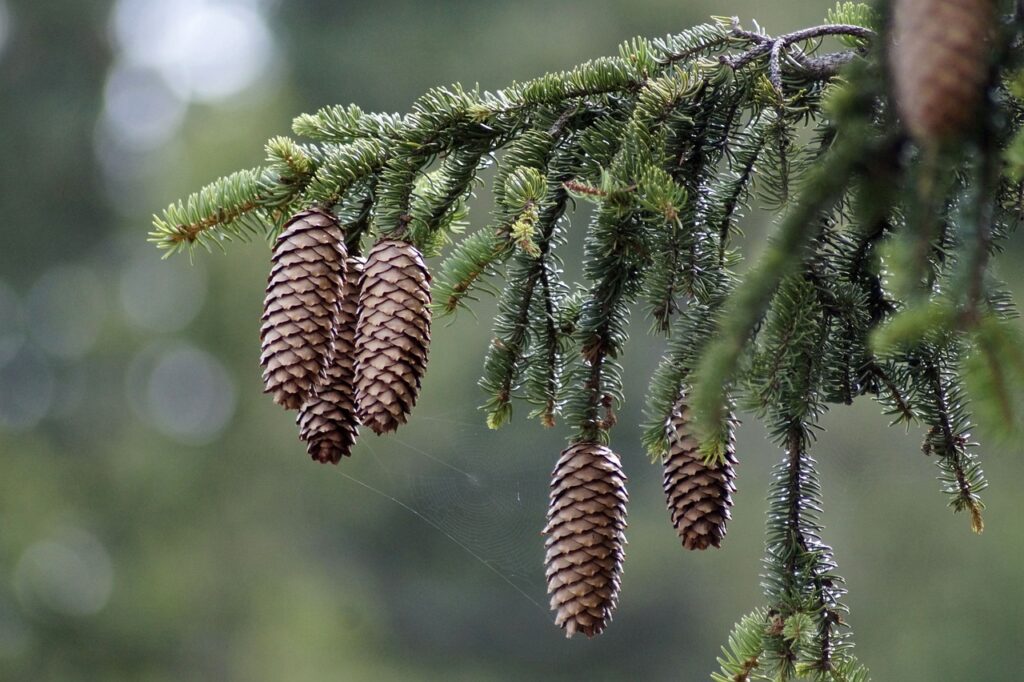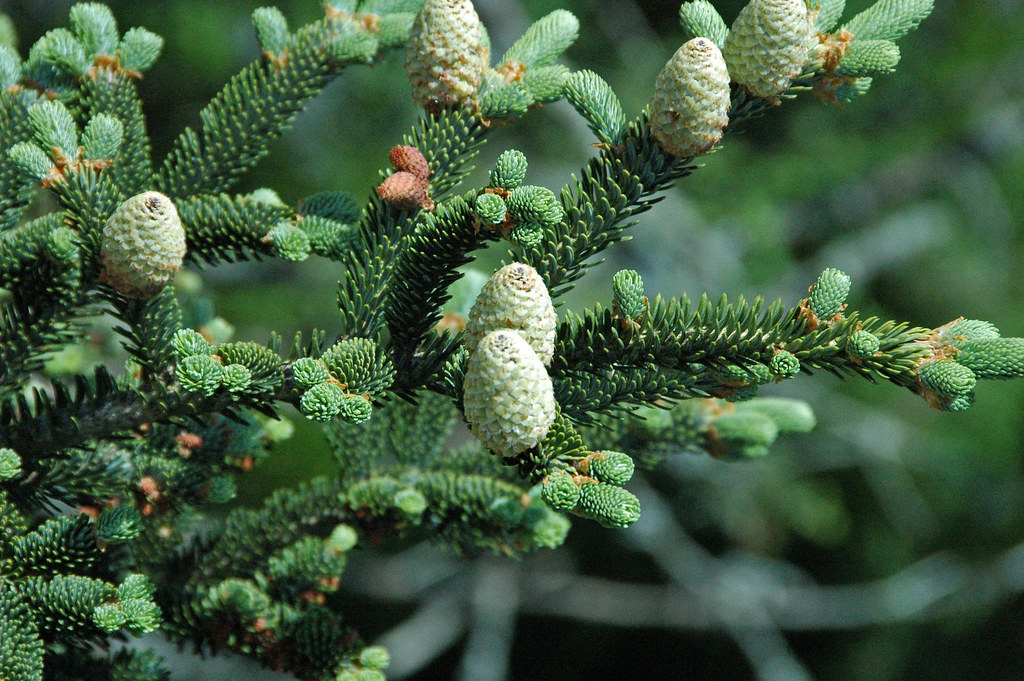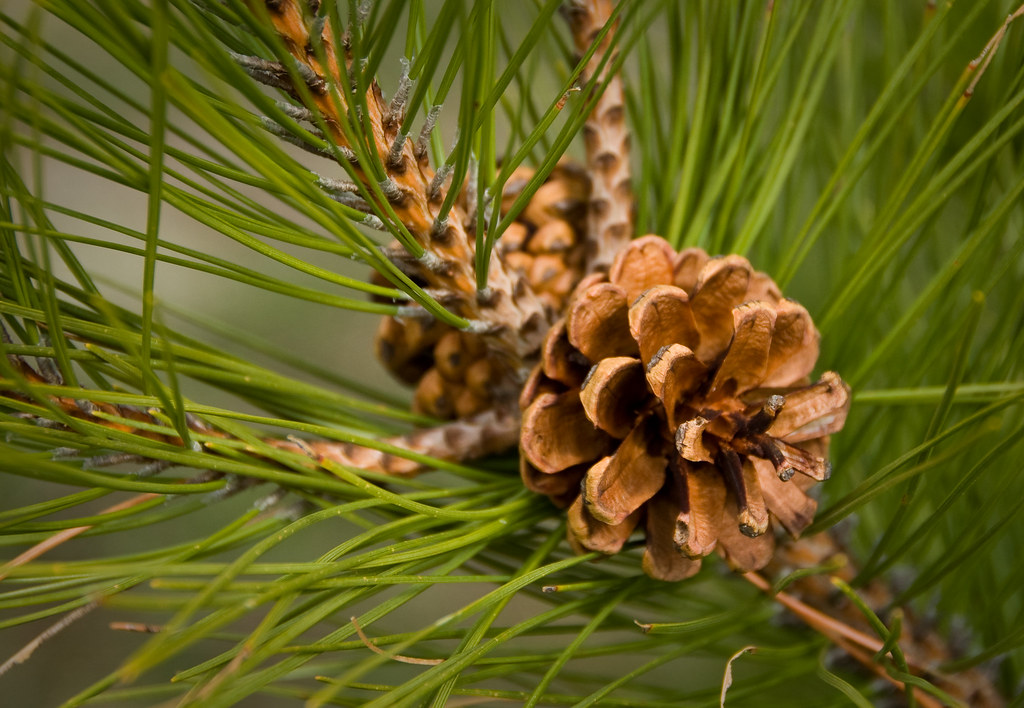
Scientists have incorporated into the widely-used urban tree management tool, i-Tree, a tool to help predict the damage that an insect species little known in North America might cause to trees growing in a specific area if it is introduced. This tool is available to all here.
I rejoice that predictive tools are becoming widely available. The tool is obviously the result of a lot of work by participating scientists – who are listed below. I hope many of you will try it out! Perhaps you and your students can join efforts by the tool-development team, especially in analyzing insect species from Central America and Asia that have not yet arrived in North America? If you are interested in helping, contact Katheryn Thomas, Angela Mech, or Ashley Schulz; you can obtain their contact information by visiting their institution’s website. You might choose which insect species to evaluate by consulting your own or colleagues’ research, reviewing the refereed and grey literature, APHIS and CFIA interception databases, databases maintained by several countries, websites such as CABI, EPPO, etc.
The new tool might help create a more effective “early warning” system. Whether this happens depends on what others do now. Anyone – perhaps a staffer of a federal or state agency, or a city tree manager, or an academic – can apply the tool to meet his/her own objectives. If a more effective national or continental “early warning” system is to be created, someone needs to set up a process for conveying the findings to responsible federal or state/provincial agencies or even the scientific societies, e.g., Entomological Society (and, in the case of beetles transporting associated fungi, American Phytopathological Society). Perhaps the most challenging issue is to find an entity willing to receive these communications, review their accuracy, and – at a minimum – make the results accessible to phytosanitary agencies, interested public, etc. One possible entity is “PestLens”, a web-based early-warning system maintained by APHIS. The project’s objective is to provide early-warning information and facilitate a prompt, coordinated, and appropriate safeguarding response. PestLens posts alerts once a month. These are visible to anyone who subscribes. However, it remains unclear how often APHIS and state agencies act on the notices. The North American Plant Protection Organization (NAPPO) also hosts an alert system, but it records only official notices, leading to some absurdities. (E.g., NAPPO reported Mexico’s designation of the invasive shot hole borers as quarantine pests – without mentioning that they are well-established in California because neither APHIS nor California Department of Food and Agriculture has designated the insects as officially regulated.)
Those applying the tool need to have some knowledge and access to a range of scientific resources (including, in my view, people who can check the accuracy of the data entered into the system). Users must have appropriate skills to conduct some research into the insect and what it feeds on. Information required for the tool includes the following:
- taxonomic information for the insect (Order, Family, Genus, Species)
- the feeding guild of the insect (i.e., foliovore, gall, reproductive, root, sap, wood)
- climate in the native range of the insect (i.e., Tropical, Dry, Temperate, Continental, Polar)
- native range of the insect (i.e., Afrotropical, Australasian, Indomalayan, Neotropical, Oceanian, Palearctic Asia, Palearctic Europe)
- the host trees of the insect in its native range (scientific name [Genus species]). The tool warns participants to include the full range of potential tree hosts – by listing either all or a representative sample. The tool will use this information to estimate the evolutionary distance between known native hosts and potential North American hosts using comprehensive phylogenetic tree of plants.
Clearly, those using the tool have their work cut out for them! The tool does provide definitions, descriptors, and drop-down lists for most of the factors, including insect orders and families, tree genera, geographic origins, and climate types. Users are now anticipated to be employees of federal and presumably state agencies; academics – even students!—and others who have the capacity to research what an insect feeds on in its native range.
This tool is intended to predict the probability that an insect species of concern – either newly detected in the country or thought likely to invade based on port detections or other reasons — will become a high impact invader. I rejoice that they are inclusive – the tool can test the vulnerability of 50+ conifer species and 360+ hardwood species native to North America. Assuming the assessor can enter accurate information for the categories outlined above, the tool can then provide a list of probabilities for each relevant North American host tree.
The tool is based on the findings of two studies, Mech et al. and Schulz et al. (full citations at the end of this blog). I discussed these studies in earlier blogs. They were also incorporated into the broader effort to identify predictive traits carried out by Raffa et al. (full citations at the end of this blog) and discussed in a separate blog. See the section titled “Potential” to see the exciting results of an application of the Mech et al. findings and methods.
To develop the tool, project scientists synthesized data on traits and factors representing four types of drivers: (1) insect traits, (2) tree traits (especially those associated with host defenses), (3) the relatedness between the insect’s native and North American tree hosts, and (4) the relatedness between the non-native insect and North American insects on the same tree. They tested key hypotheses, e.g., defense free space and enemy release. The team tested the tool with researchers from USDA APHIS and Canadian Food Inspection Agency (CFIA), Northeast Plant Diagnostic Network, and National Invasive Species Council.

The research group hopes this tool will stimulate development of a global database of insects which will utilize the results of basic research on phytophagous insects and what they eat. Basic research on insects native to North America is also important and can benefit other countries that might want to develop a similar tool for their own phytosanitary needs.
The Tool’s Potential
Many of the scientists who developed the i-Tree tool have participated in an analysis of the threat to North American conifer species posed by insects native to Europe that have not yet been introduced to North America (Uden et al.). They applied the methodology from Mech et al., which is comparable to, although not identical to, the i-Tree system. They (1) created a list of 62 European insect species that appear to pose a risk to 47 species of North American conifers; (2) identified and compared the predicted likelihoods of high-impact invasion under each of four phylogenetic systems datasets; and (3) evaluated risk and vulnerability trends among insects & conifer hosts, respectively. In total they evaluated 2,914 insect–novel host pairs.

Among their findings are the following:
- Of the 2,914 pairs examined, 302 (10.4%) had a predicted risk of high impact. These pairs included 41 (66%) of the insect species and 20 (41.7%) of the conifer species. The proportion of potential invasions posing a significant risk is higher than those indicated by earlier studies.
- The insect species posing a risk of high-impact invasion were spread among insect orders, with relatively high levels concentrated in Lepidoptera and Coleoptera, fewer in the Hymenoptera and Hemiptera.
- Consistent with Mech et al., they found a “Goldilocks” period of evolutionary divergence of hosts exposing the North American tree species to the highest risk. Thus, if a North American conifer shared a common ancestor with the insect’s native European host ~2–10 million years ago, it was predicted to be more vulnerable to a high-impact invasion by a conifer specialist.
- North American fir (Abies) and spruce (Picea) species are more vulnerable to the introduction of European conifer-specialist insects than are pines (Pinus). [Mech et al. found that trees with high shade tolerance and low drought tolerance are more vulnerable. These traits also fit fir and spruce; but not pine.] The most vulnerable tree species was red spruce (Picea rubens).
Uden et al. also say Fraser fir (Abies fraseri) and Carolina hemlock (Tsuga caroliniana) are highly vulnerable to European insect species. They identified 17 high-risk insect species for Fraser fir. Of course, both are already severely depleted by non-native insect pests (Balsam woolly adelgid and hemlock woolly adelgid, respectively). They have also been identified by the Potter et al. “Project CAPTURE” process as having high priorities for conservation efforts.
I worry that fir and spruce are less important as timber species than pines; I hope this does not result in agencies and important stakeholders assigning this risk finding a lower priority.
Uden et al. assert that their study shows that this system can identify vulnerable tree species in the absence of information about which particular insect might invade. This information helps managers focus biosecurity and management program programs on protecting the most vulnerable tree species. However, 57% of the North American conifers (27 species) were found to be vulnerable under at least one of the insect-host pairs. To further set priorities, they suggest combining predictions from this analysis with USFS Forest Inventory and Analysis (FIA) data to identify vulnerable biogeographic regions and vegetation communities. (Fraser fir and Carolina hemlock rank high under this process.) Scientists could also apply species importance indicators, such as the NatureServe Explorer plant community descriptions. They suggest linking these criteria to the USFS Early Detection Rapid Response surveillance program, link to website which currently targets specific insect species.
Uden et al. also warn that their analysis focused on a narrow range of possible introduced species: insects from Europe that feed on conifers exclusively. They caution that no one should assume that tree species that have a low “vulnerability” rank in this study should be considered at low risk for all possible introduced insects. They suggest researchers should identify tree species from the wider Palearctic that are within the high-impact “Goldilocks” zone of divergence times in relation to specific North American tree species, and then identify the insects that feed on those Palearctic trees to determine the species that would have the highest predicted risk of causing a high impact on those North American conifers.
Of course, many North American tree species are not conifers! Applying the methods in Schulz et al. – now integrated into the i-Tree tool – would facilitate similar predictive findings for the angiosperms.
Participants
The importance of this project is seen in the impressive array of funders supporting it. They include:
- U.S. Geological Survey John Wesley Powell Center for Analysis and Synthesis for a working group titled “Predicting the nest high-impact insect invasion: Elucidating traits and factors determining the risk of introduced herbivorous insects on North American native plants;”
- USDA Forest Service National Urban and Community Forestry Advisory Council funded a working group titled “Forecasting high-impact insect invasions by integrating probability models with i-Tree from urban to continental scales”;
- Nebraska Cooperative Fish and Wildlife Research Unit;
- University of Washington;
- USDA Forest Service Eastern Forest Environmental Threat Assessment;
- National Science Foundation Long-Term Ecological Research program;
- USDA Forest Service International Programs; and
- USDA National Institute of Food and Agriculture (Hatch and McIntire-Stennis projects).
Scientists who created this tool:
Kathryn A. Thomas (USGS – Southwest Biological Research Center)
Travis D. Marsico (Arkansas State University)
Daniel A. Herms (The Davey Tree Expert Company)
Patrick C. Tobin (University of Washington)
Andrew Liebhold (U.S. Forest Service)
Nathan Havill (U.S. Forest Service)
Angela Mech (University of Maine)
Ashley Schulz (Mississippi State University)
Matthew Ayres (Dartmouth College)
Kamal Gandhi (University of Georgia)
Ruth A. Hufbauer (Colorado State University)
Kenneth Raffa (University of Wisconsin) Daniel
Uden (University of Nebraska-Lincoln)
Carissa Aoki (Maryland Institute College of Art)
Scott Maco (The Davey Tree Expert Company)
Angela Hoover (University of Arizona)
SOURCES
Mech, A.M., K.A. Thomas, T.D. Marsico, D.A. Herms, C.R. Allen, M.P. Ayres, K.J.K Gandhi, J. Gurevitch, N.P. Havill, R.A. Hufbauer, A.M. Liebhold, K.F. Raffa, A.N. Schulz, D.R. Uden, and P.C. Tobin. 2019. Evolutionary history predicts high-impact invasions by herbivorous insects. Ecol Evol. 2019. Nov; 9(21):12216-12230.
Potter, K.M., Escanferla, M.E., Jetton, R.M., Man, G., Crane, B.S. 2019. Prioritizing the conservation needs of United States tree species: Evaluating vulnerability to forest insect and disease threats. Global Ecology and Conservation (2019), doi: https://doi.org/10.1016/j.gecco.2019.e00622.
Raffa, K.F., E.G. Brockerhoff, J-C Gregoire, R.C. Hamelin, A.M. Liebhold, A. Santini, R.C. Venette, and M.J. Wingfield. 2023. Approaches to Forecasting Damage by Invasive Forest P&P: A Cross-Assessment. BioScience Vol. 73 No. 2: 85–111 https://doi.org/10.1093/biosci/biac108
Schulz, A.N., A.M. Mech, M.P. Ayres, K. J. K. Gandhi, N.P. Havill, D.A. Herms, A.M. Hoover, R.A. Hufbauer, A.M. Liebhold, T.D. Marsico, K.F. Raffa, P.C. Tobin, D.R. Uden, K.A. Thomas. 2021. Predicting non-native insect impact: focusing on the trees to see the forest. Biological Invasions.
Uden, D.R, A.M. Mech, N.P. Havill, A.N. Schulz, M.P. Ayres, D.A. Herms, A.M. Hoover, K.J. K. Gandhi, R.A. Hufbauer, A.M. Liebhold, T.D. M., K.F. Raffa, K.A. Thomas, P.C. Tobin, C.R. Allen. 2023. Phylogenetic risk assessment is robust for forecasting the impact of European insects on North American conifers. Ecological Applications. 2023; 33:e2761.
Posted by Faith Campbell
We welcome comments that supplement or correct factual information, suggest new approaches, or promote thoughtful consideration. We post comments that disagree with us — but not those we judge to be not civil or inflammatory.
For a detailed discussion of the policies and practices that have allowed these pests to enter and spread – and that do not promote effective restoration strategies – review the Fading Forests report at http://treeimprovement.utk.edu/FadingForests.htm
or
